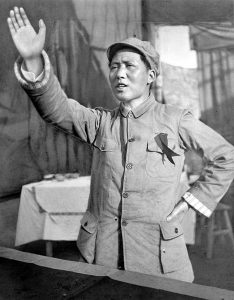50 Years Ago: The Red capitalist class
The Red capitalist class
 Any thoughtful person must have realised that opposition to Mao in China over recent years has not been confined to the proverbial ‘handful of top people in authority taking the capitalist road’. A recent issue of the weekly journal of the Union of Soviet Writers carried a letter from a schoolboy in Peking who wrote that ‘. . . the eyes of a majority of the youth are open. Many no longer believe in Mao Tse-tung. But there are still quite a number who do believe in him and who do not understand that he is the cause of all the difficulties of China.’ This sort of comment comes as no surprise to socialists. Even in the current world situation where the vast majority of people (in China as elsewhere) look upon capitalism as the only practicable method of running society, it is inevitable that sizeable groups of working men and women should come into conflict with the capitalist class in every country. ( …)
Any thoughtful person must have realised that opposition to Mao in China over recent years has not been confined to the proverbial ‘handful of top people in authority taking the capitalist road’. A recent issue of the weekly journal of the Union of Soviet Writers carried a letter from a schoolboy in Peking who wrote that ‘. . . the eyes of a majority of the youth are open. Many no longer believe in Mao Tse-tung. But there are still quite a number who do believe in him and who do not understand that he is the cause of all the difficulties of China.’ This sort of comment comes as no surprise to socialists. Even in the current world situation where the vast majority of people (in China as elsewhere) look upon capitalism as the only practicable method of running society, it is inevitable that sizeable groups of working men and women should come into conflict with the capitalist class in every country. ( …)
In China the Maoist representatives of the capitalist class have long been engaged in spurious polemics with their rivals in the Soviet Union and other countries such as Yugoslavia, emphasising that these cannot be socialist since a ‘privileged bourgeois stratum’ exists there. It is hardly surprising, then, that numbers of workers in China who have been fed a staple diet of these sorts of comments in the editorials of the People’s Daily and Red Flag should quite naturally apply a similar analysis to China itself and decide that ‘a red capitalist class’ is in power rather than the official myth that it is the workers themselves who rule.
(Socialist Standard, November 1969)
